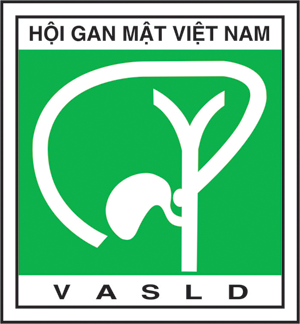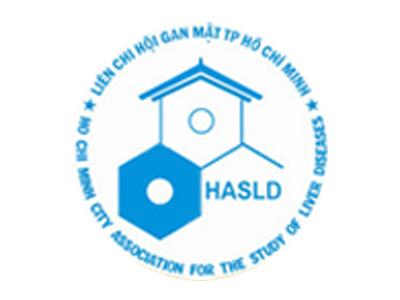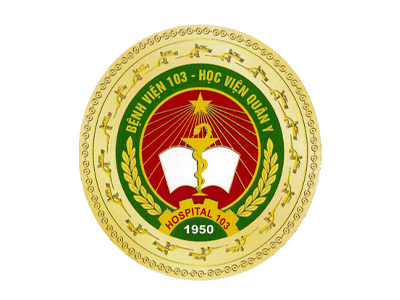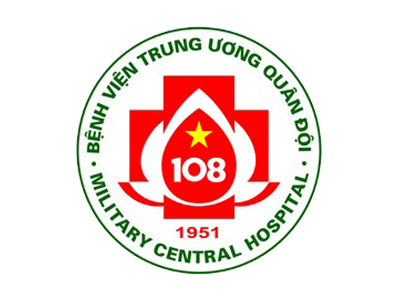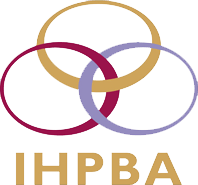Study on Validity of Biomarkers DKK1 and HBx-LINE1 in Diagnosis and Posttreatment Monitoring of Hepatocellular Carcinoma
Major General Prof. Dr. LE TRUNG HAI
President, Vietnam Association for the Study of Liver Diseases
Dr. LE TRUNG HIEU
Department of Hepato-Biliary Pancreatic Surgery, CMH 108 at al
SUMMARY:
+ Aims: Evaluate validity of DKK1 and HBx-LINE1 in diagnosis and post-treatment of HCC/HBV and analyse relationship with clinical and paraclinical some characteristics.
+ Methods: Study on 114 HCC patients at Central Military Hospital (CMH) 108 and Military Hospital (MH) 103 (1/2016-3/2018). DKK1 and HBx-LINE1 were analyzed in Department of Microbiology of CMH 108, including using Realtime PCR technique with Taqman probe for level of mRNA DKK1 expression and ELISA technique for serum protein DKK1. Total RNA was transcribed to cDNA and subsequently amplified by hemi-nested PCR in order to identify HBx-LINE1 transcripts.
+ Results: With DKK1 ≥2.15 ng/mL, the positive rates of serum protein DKK1 were significantly increased when compared with those of AFP. The mean of serum protein DKK1 of HCC was significantly higher than it in liver cirrhosis (LC) patients with p<0.05. Combination between AFP and DKK1 expression will improved positive rates and help more diagnosis in 12.3% of HCC cases. Logistic regression analysis showed the risk of HCC will increased about 18.5 times when DKK1 ≥2.15 ng/mL. The level of DKK1 expression reduced in patients with ≥2 tumors when compare with one tumor and in cases with size ≥5 cm when compare with <5 cm. This correlation was the same with reducing of AFP related with quantity and size of tumor. The level of DKK1 expressions reduced in post-hepatectomy when compare with those before surgery and in time of more than one year when compare with those from 1 to 12 months. We did not identify HBx-LINE1 fusion transcript in all 114 (100%) HBV-related HCC patients.
+ Conclusion: Biomarkers serum protein DKK1 and DKK1 expression have validity in diagnosis and post-treatment monitoring of HCC, especially for AFP-negative patient. HBx-LINE1 fusion transcript was not identified in our study.
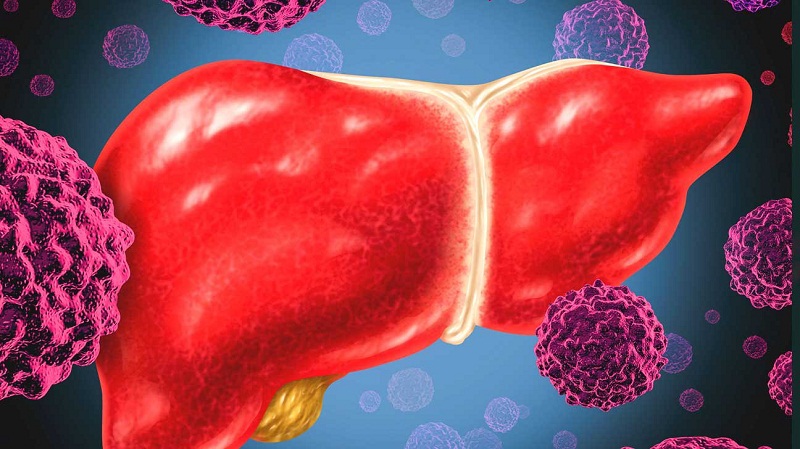
INTRODUCTION
Hepatocellular carcinoma (HCC) - now the most common cancer in Vietnam with mortality about more than 25 000 cases per year (Globocan 2018)(4). HBV infection is a top risk for HCC in Vietnam with about 60-80% HCC patients associated HBV(+). Study of TN Dung (2018) (1) in 3 biggest military hospitals showed HCC was also the number one. Diagnosis of HCC based on three main factors: imaging diagnosis, biomarker tests and histo-pathology. AFP is a biomarker with sensitive rate about 60% when level >20 ng/mL. So that about 40% of AFP was false negative. AFP-L3 and DCP helped to increased diagnosis rate. When combined them will gain detection of HCC, especially for tumor less than 2 cm. But the cost of diagnosis and only of some medical centers can perform these tests. So that, we studied to find one new biomarker to increase sensitive, specification and support for AFP also for small tumor in diagnosis, prognosis treatment effectiveness monitoring of HCC.
Dickkopf-1 (DKK1), a secretory antagonist of the canonical Wnt signalling pathway, was identified in 1998. It is hardly expressed in normal human adult tissues, except in placental and embryonic tissues. The large-scale, multicenter study of Shen at al (2012) (6) showed that serum DKK1 could potentially be used to diagnose HCC, especially early-stage disease, and will help to resolve the deficiencies of AFP in the testing of AFP-negative patients, and can be used to make differential diagnoses. Other study of Jie Zhang (2014) (3) also indicated DKK1 or DKK1 combined with AFP help exact diagnosis of HCC with high level.
HBx-LINE1 - a HBV-human chimeric fusion transcript was described in 2014 (4) and its has functions as a long noncoding RNA and associated with tumor formation hepatitis B virus (HBV)-induced liver carcinogenesis. Study in Hongkong by Lau et al (7) showed that HBx-LINE1 was occurred in 23.3% of HBV-associated HCC tumors and associated with poor prognosis in patients with HCC from Hongkong. Jessica Zucman-Rossi (2014) (12) did not identify HBx-LINE1 fusion transcript in a series of 50 HBV-related HCC from Europe. He discussed that the result of Lau et al could be restricted to the Hong Kong population where HBV genotype C is predominant and need other study to evaluate.
In Vietnam there are still not any study about biomarkers DKK1 & HBx-LINE1. Our study to evaluate validity of DKK1 and HBx-LINE1 in diagnosis and post-treatment monitoring of HCC/HBV and analyse relationship with clinical and paraclinical some characteristics.
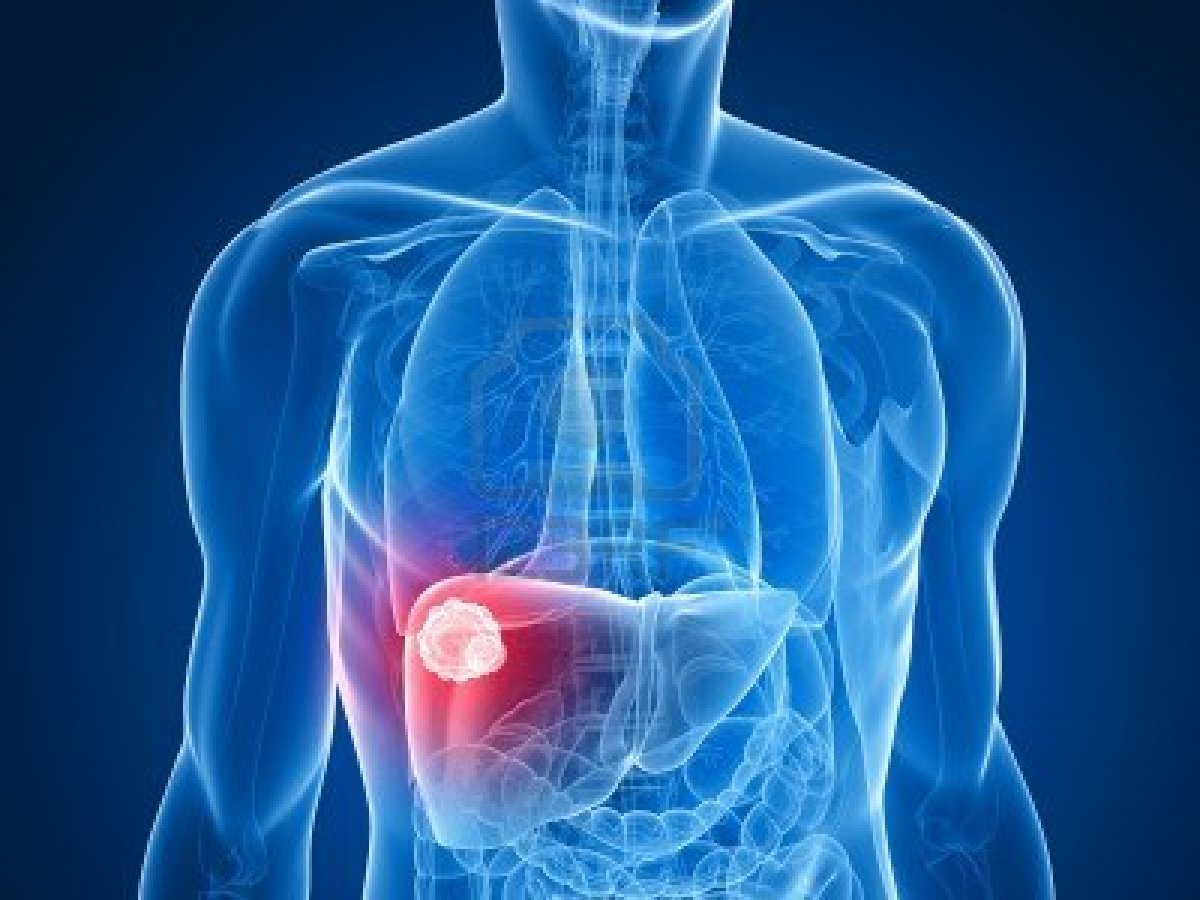
METHODS
Study on 114 HCC patients and 6 LC patients at CMH 108 and MH 103 (1/2016-3/2018). DKK1 and HBx-LINE1 were analyzed in Department of Microbiology of CMH 108, including using Realtime PCR technique with Taqman probe for level of mRNA DKK1 expression and ELISA technique (with kit from R&D Systems, Inc) for serum protein DKK1. For identifying of HBx-LINE1 transcripts: the quality of total RNA preparations was assessed by NanoDrop spectrometer. Approximately 500 ng of total RNA were used for reverse transcription (RT) by RevertAid First Strand cDNA Synthesis Kit following the manufacturer’s instructions. Reverse-transcribed cDNA was subsequently amplified by hemi-nested PCR using the primer pairs as described by Lau et al. (7). A synthesized plasmid sequence as described containing the fusion HBx-LINE1 transcript was utilized as positive control. The GAPDH cDNA gene transcript (496bp) was used as an internal control. In both PCR reactions, the annealing temperatures were 60°C and products were amplified in 30 cycles. PCR products were analyzed on 1.5% agarose gel together with the positive plasmid control.
RESULTS AND DISCUSSION
* Result of DKK1 test
- Serum protein DKK1 concentration:
Table1. Serum protein DKK1.
|
Serum protein DKK1 (ng/mL) |
Hepatectomy for HCC group |
Biopsy for HCC group |
Both |
|||
|
N |
% |
N |
% |
N |
% |
|
|
<2,15 |
2 |
6.06 |
1 |
1.23 |
3 |
2.63 |
|
|
31 |
93.94 |
80 |
98.77 |
111 |
97.37 |
|
|
33 |
100 |
81 |
100 |
114 |
100 |
|
Mean (min-max) |
133.3± 94.48 (0-336.39) |
123.68±96.19 (0-456.02) |
126.47±94.83 (0-456.02) |
|||
Table 2. Serum AFP
|
Serum AFP (ng/mL) |
Hepatectomy for HCC Group |
Biopsy for HCC Group |
Both |
|||
|
N=33 |
% |
N=81 |
% |
N=114 |
% |
|
|
<20 |
16 |
48.48 |
25 |
30.86 |
41 |
39.96 |
|
≥20 |
17 |
51.52 |
56 |
69.14 |
73 |
60.04 |
|
Mean (min-max) |
534.15±924.14 (0.85-3300) |
734.76±894.05 (1.93-2479) |
659.54±905.43 (0.85-3300) |
|||
Positive rate of serum protein DKK1 (97.37%) was significantly higher than positive rate of serum AFP (60.04%). Mean concentration of serum protein DKK1 of HCC was 126.47 ± 94.83 ng/mL significantly higher than that of liver cirrhosis (37.04 ± 33.96 ng/mL) with p<0.05.
Tung EK.K. et al 2012 (3), Prieto P.A. et al 2013 (9), J. Zhang et al 2014 (6), Y.M. Fouad et al 2016 (11): DKK1 additional for AFP in diagnosis of HCC, especially for the patient with AFP (-).
- Gene expression of mRNA DKK1:
21.05% patients: gene expression DKK1 (+), including 12.3% patients with AFP (-). Combination of AFP and gene expression DKK1 improved (+) rate and more diagnosis in 12.3% of patients with HCC.
M. Watany at al 2017 (8) tested gene expression DKK1 in 50 HCC cases and 10 control cases showed DKK1 was one promising biomarker for diagnosis, even patient with AFP (-) and AFP associated with DKK1 improved accurate diagnosis of HCC/HBV.
* Relationship between DKK1 and some clinical and paraclinical characteristics:
- In hepatectomy group due to HCC: gene expression DKK1 reduced in tumor number ≥2 tumors when compared to 1 tumor. This reduction was the same when tumor size ≥5cm compared with <5 cm. Both above reduction were the same with AFP exchange about tumor number and size.
+ Combination with DKK1 in diagnosis when AFP (-) in hepatectomy group: in 16 patients with AFP (-) but serum protein DKK1 (+). So that, if using combination all 3 tests: AFP, serum protein DKK1 & gene expression mRNA DKK1 will improving more diagnosis for patient with AFP (-).
+ Logistic regression analysis
Table 3. Logistic regression analysis with serum protein DKK1 in HCC patients
|
Protein DKK1 (ng/mL) |
HCC group |
LC group |
OR |
95% (CI) |
P |
||
|
N |
% |
N |
% |
||||
|
<2.15 |
3 |
2.63 |
2 |
33.33 |
18.5 |
2.39- 143.49 |
p=0.005 |
|
≥ 215 |
111 |
97.37 |
4 |
66.67 |
|||
|
Total |
114 |
100.00 |
6 |
|
|
|
|
Logistic regression analysis showed risk factor of HCC in patient with serum protein DKK1 group ≥2.15 ng/mL higher 18.5 times when compared with liver cirrhosis group with p<0.05.
* Value for posttreatment monitoring of HCC and relationship of DKK1: from 33 cases of hepatectomy due to HCC: 19 cases came back for re-examination and DKK1 test. Mean time of re-examination 11.68 months (4-20 months).
- Result: change of gene expression DKK1 at post-treatment time (0.98±2.10) was reduced when compared to before surgery (2.23±6.49) and gene
expression DKK1 after surgery >12 months (0.22±0.09) was reduced when compared to before this point (1-12 months) (with gene expression DKK1 of 1.28±0.59).
- Correlation between gene expression DKK1 level and AFP before and after hepatectomy: Post-surgery gene expression DKK1 level was reduced when compare to before surgery. Post-surgery AFP rate (-): 73.91%, AFP (+) 26.09%.
Jeng J-E at al. 2014 (5): gene expression DKK1 level was reduced after hepatectomy. Recent studies showed serum DKK1 level was prognostic marker when noninvasive HCC, especially for early HCC or HCC with AFP (-) HCC patient with high level of gene expression DKK1 were bad prognosis. That is new prognostic factor in HCC.
* Result of HBx-LINE1 test
In the 114 tumor and matched serum samples, HBx-LINE1 transcripts were not detected in any of the samples examined. The positive control remained positive & the negative control was negative in all assays.
These results were the same with those of the study of J. Zucman - Rossi at al. 2014 (France) (12) and one again showed that except result of C.C. Lau (Hongkong) detected HBx-LINE1 in 23.3% (a chimerical transcript recently identified in a Chinese population of HBV-related HCC was claimed to be associated with tumor formation and poor patient survival). Studies outside of Hongkong still not found any HBx-LINE1 transcript expression in HCC/HBV.
While ethnic variation might in part account for such a discrepancy. In Vietnam with high rate of HBV infection (15-20%), in that B type gene was most common (45.5% BH Hoang - 2004) (2) so different to those of Hongkong (where C type gene was predominant).
So that, at this moment, we must definitely conclude that, based on our results and the previous study of Zucman-Rossi and others, any usefulness of the HBx-LINE1 transcript as a prognostic biomarker must clearly be rejected. Further studies are warranted to assess any prognostic potential of HBx-LINE1 in HBV-associated HCC development.
CONCLUSION
Study on 114 patients with HCC/HBV in two biggest military hospitals in Hanoi, Vietnam (1/2016-3/2018) showed that:
* With level ≥2.15 ng/mL, serum protein DKK1 (+) rate in groups hepatectomy, biopsy and both were significantly higher when compared with AFP (+) rate (with level ≥20 ng/mL). Serum protein DKK1 concentration in HCC group was significantly higher when compared with LC group (p<0.05).
- Using combination both AFP and gene expression mRNA DKK1 was improved (+) rate and helped more diagnoses in 12.3% HCC cases.
- Combination three tests AFP, serum protein DKK1 and gene expression DKK1 helped more diagnosis for HCC with AFP (-).
- Logistic analyze showed HCC risk in group, who had serum protein DKK1 ≥2.15 ng/mL higher 18.5 times when compared with LC group (p<0.05).
- Gene expression mRNA DKK1 reduced after hepatectomy and post-surgery >12 months. Gene expression mRNA DKK1 reduced when tumor number >2 and size ≥5cm, similar to AFP concentration.
* The HBx-LINE1 transcripts were not detected in any of our clinical samples. The confirmation of role of HBx-LINE1 as prognostic biomarker need to again evaluate and a high rate of this transcripts in HCC/HBV patients should more study to evaluate./.
References
- Tran Ngoc Dung, 2018. “Study on cancer diseases in some biggest military hospitals”. Scientific Congress of Students at MMU - 6/2018.
- Bui Huy Hoang, 2004. Characteristics of serum marker and genotype of HBV in LC and HCC patients. Med PhD thesis of MU at HCMC.
- Edmund Kwok-Kwan Tung et al, 2012. “Significance of serum DKK1 as a diagnostic biomarker in HCC”. Future Oncol 2012 Dec; 8(12): 1525-8.
- GLOBOCAN 2018, "Cancer fact sheet: Liver cancer incidence and mortality worldwide in 2018", Online publish.
- Jeng JE, Chuang LY, Chuang WL, Tsai JF, 2012. "Serum Dickkopt-1 as a biomarker for the diagnosis of HCC”, Chin Clin Oncol, 1, 4-7.
- Jie Zhang et al, 2014. “Sensitivity and specificity of Dickkopf-1 protein in serum for diagnosing hepatocellular carcinoma: a meta-analysis”. Int J Biol Markers, Dec 9;29(4):e403-10.
- Lau CC, Sun T, Ching AK et al, 2014. "Viral-human chimeric transcript predisposes risk to liver cancer development and progression", Cancer Cell, 25: 335-49.
- Mona Watany et al, 2017. “Study of Dickkopf-1 (DKK-1) Gene Expression in HCC Patients”. Journal of Clinical and Diagnostic Research (JCDR) Feb: 11:2: OC32-OC34.
- Prieto PA, Cha CH, 2013. “DKK1 as a serum biomarker for hepatocellular carcinoma”, Hepatobiliary Surg Nitr, 2(3): 127-128.
- Shen Q, Fan J, Yang XR, 2012. “Serum DKK1 as a protein biomarker for the diagnosis of hepatocellular carcinoma: a large-scale, multicenter study”, Lancet Oncol, 13: 817-26.
- Yasser M. Fouad et al, 2016. “Clinical significance and diagnostic value of serum dickkopf-1 in patients with hepatocellular carcinoma” Scand J Gastroenterol Sep;51(9):1133-7.
- Zucman-Rossi J, 2014. “Authors’ response: virus-host in HBV-related HCC: more to be revealed”, Gut; 0:1.

- Khuyến cáo hướng dẫn về chẩn đoán và điều trị bệnh lý gan mật tuỵ tại Việt Nam
- GHÉP GAN DO SUY GAN CẤP TRÊN NỀN MẠN & XÂY DỰNG KHUYẾN CÁO VỀ ACLF Ở VIỆT NAM
- KỶ YẾU HỘI NGHỊ PHẪU THUẬT GAN MẬT TỤY VIỆT NAM 2025 “Tiến bộ mới trong Phẫu thuật Gan mật tuỵ Việt Nam”
- KỶ YẾU HỘI NGHỊ GAN MẬT TỤY VIỆT NAM 2024 Chủ đề: “Đẩy mạnh phát triển tiến bộ kỹ thuật Gan mật tuỵ”
- Tạp chí Gan Mật số 59: "KỶ YẾU HỘI THẢO THƯỜNG NIÊN KỶ NIỆM NGÀY VIÊM GAN THẾ GIỚI Chào mừng 30 năm ngày Truyền thống Bệnh viện Đại học Y Dược Tp Hồ Chí Minh Chủ đề: “Chung tay phòng trị Viêm
- Tạp chí Gan Mật số 58 : "Hội thảo Khoa học Ghép gan tại BV TWQĐ 108 tháng 3/2023"
- Tạp chí Gan Mật số 57 : "KHUYẾN CÁO VỀ CHẨN ĐOÁN VÀ ĐIỀU TRỊ BỆNH LÝ GAN MẬT TUỴ TẠI VIỆT NAM"
- GIÁ TRỊ CỦA AFP-L3%, PIVKA-II TRONG TIÊN LƯỢNG TÁI PHÁT SAU CẮT GAN ĐIỀU TRỊ UNG THƯ BIỂU MÔ TẾ BÀO GAN
- CÁC RÀO CẢN TRONG QUÁ TRÌNH TIẾP CẬN VÀ SỬ DỤNG DỊCH VỤ ĐIỀU TRỊ VIÊM GAN VI RÚT: KẾT QUẢ TỪ NGHIÊN CỨU HÀNH TRÌNH NGƯỜI BỆNH
- Dấu Ấn HBcrAg Huyết Thanh Ở Bệnh Nhân Nhiễm Vi Rút Viêm Gan B Mạn Tại Bệnh Viện Bạch Mai
- NGHIÊN CỨU GIÁ TRỊ CỦA AFP, AFP-L3 VÀ PIVKA-II KẾT HỢP SIÊU ÂM Ổ BỤNG TRONG PHÁT HIỆN UNG THƯ GAN NGUYÊN PHÁT TRÊN ĐỐI TƯỢNG VIÊM GAN, XƠ GAN
- TẠP CHÍ GAN MẬT VIỆT NAM - SỐ 56/2023 - KỶ YẾU HỘI NGHỊ GAN MẬT TOÀN QUỐC LẦN THỨ 17
- Introduction of a new study: Multicenter observational study on HIV/HCV co-infection in Northern Vietnam
- Tumor thrombectomy via surgically reopened umbilical vein as a palliative treatment for patient with advanced Hepatocellular Carcinoma
- CHẤT LƯỢNG CUỘC SỐNG VÀ MỘT SỐ YẾU TỐ LIÊN QUAN TRÊN NGƯỜI BỆNH XƠ GAN ĐANG ĐIỀU TRỊ TẠI BỆNH VIỆN ĐA KHOA TỈNH TUYÊN QUANG NĂM 2022
- KHÁNG NGUYÊN LIÊN QUAN LÕI VIRUS VIÊM GAN B TRONG BỆNH CẢNH VIÊM GAN SIÊU VI B CẤP: TỔNG QUAN Y VĂN VÀ TRƯỜNG HỢP LÂM SÀNG
- ĐỐT NHIỆT SÓNG CAO TẦN ĐIỀU TRỊ UNG THƯ BIỂU MÔ TẾ BÀO GAN: KẾT QUẢ VÀ KINH NGHIỆM TẠI BỆNH VIỆN TƯQĐ 108
- Quản lý và điều trị viêm gan B mạn tái hoạt động trên bệnh nhân can thiệp liệu pháp miễn dịch
- Collaborative Research and Joint Actions Towards Viral Hepatitis Elimination in Vietnam
- Điều trị đa mô thức đối với Ung thư biểu mô bào gan (UTBMTBG)
- KỶ YẾU HỘI NGHỊ GAN MẬT TỤY VIỆT NAM 2023 “Đẩy mạnh phát triển tiến bộ kỹ thuật Gan mật tụy” Hà Nội - 2023 Kỷ niệm 105 năm Ngày Truyền thống Bệnh viện Hữu nghị Đa khoa Nghệ An ISSN: 1859 - 431X
- KỶ YẾU HỘI THẢO THƯỜNG NIÊN KỶ NIỆM NGÀY VIÊM GAN THẾ GIỚI 28/7/2023 “Cập nhật Tiến bộ mới về Viêm gan, Xơ gan & Ung thư gan”
- Outcome of brain dead donor liver transplantation: Experience from Viet Duc hospital in Vietnam
- Percutaneous transhepatic laser lithotripsy In treatment of biliary stone
- GIẢI ĐÁP VÀ KHUYẾN CÁO VỀ UNG THƯ GAN
Tin cùng loại

 VN
VN
 EN
EN